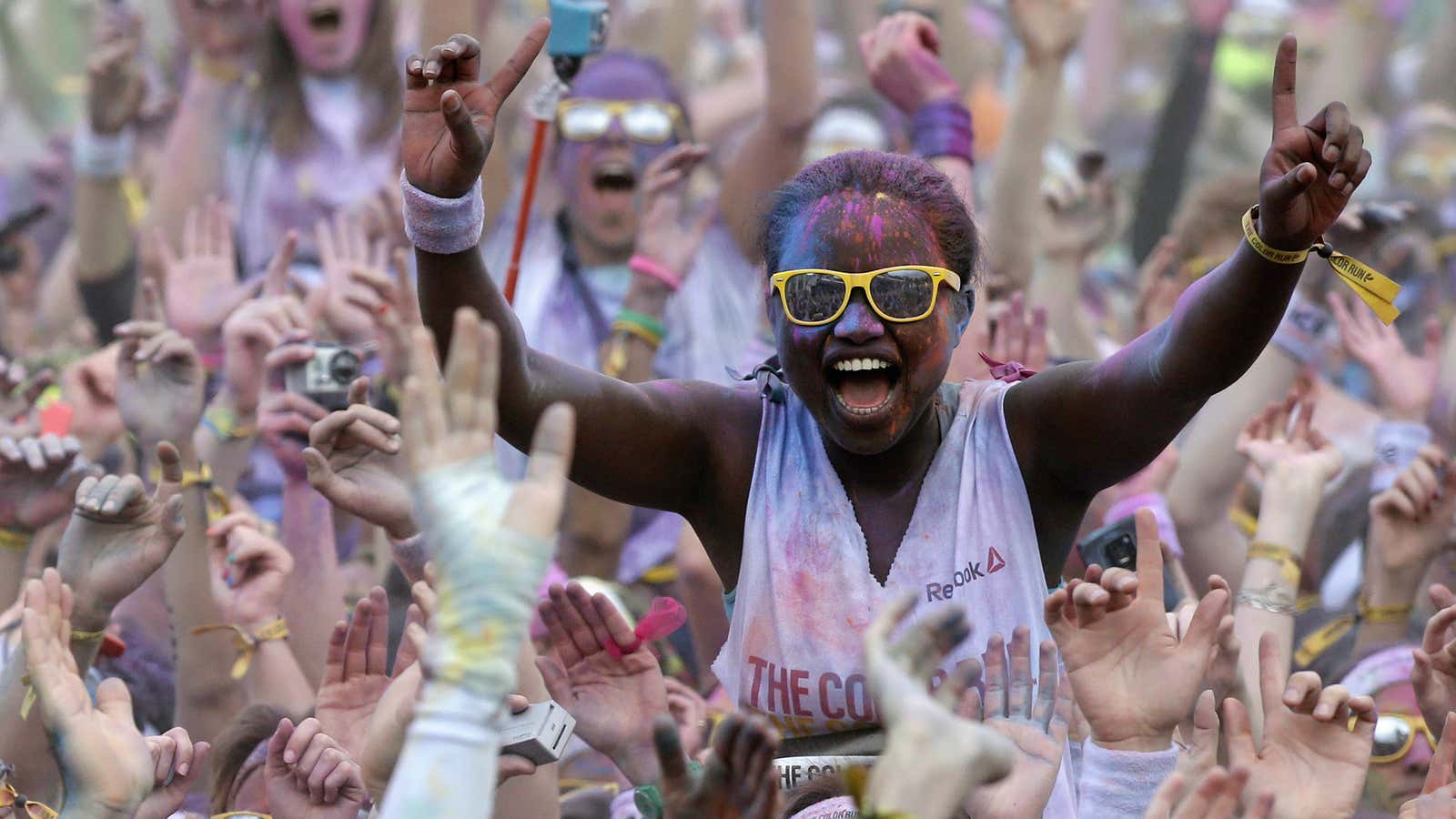Think about the last time you were really happy. Not just when you were pleasantly surprised, or you had a “nice” time, but rather a moment in which you were smiling uncontrollably and laughing not because someone said something funny, but because it was a moment of pure bliss.
Those moments tend to be few and far in between (it’s well worth writing them down so you start to recognize what leads to them), and although they give us some of our fondest memories, they also tend to come with a downside: a dull feeling of gloom once they’re over.
Happiness hangovers are not depression
For as long as I can remember, I’ve called these “happiness hangovers” (although I’m fairly certain I didn’t come up with the term on my own; I think I picked it up from a friend). These hangovers are not symptoms of depression or mental illness but a temporary feeling that reality is a little greyer than usual. For me, regular routines feel like a disappointment, and I tend to dwell on the contrast between the happiness of the past and the bland present.
There isn’t a technical scientific term for this feeling, but it’s something almost all of us experience to some degree. Most likely, it’s a consequence of the way that humans experience pleasure.
Pleasure is an evolutionary gift. It’s usually life-affirming, which is why we feel it through things like sex and sustenance. Because humans have evolved to be more complex than replicating eating-machines, we also get pleasure from activities that involve a good degree of higher-order thinking, like spending time with loved ones such as family members, going to concerts, or experiencing nature—which in turn, leads to happiness. To the best degree of scientific understanding, all animals can experience pleasure but only humans can experience happiness.
Neurologically, pleasure comes from specific areas in the brain called hedonic hotspots. “We know of about five” in the human brain, says Kent Berridge, a neuroscientist at the University of Michigan. As Berridge explains for Scientific American (pdf), when hedonic hotspots pick up signals that we’re experiencing something pleasurable, they release their own drug-like neurotransmitters. Nearby receptors pick up these neurotransmitters and create a sensation of liking. Simultaneously, hotspots work with other parts of the brain to coordinate wanting, which is triggered by the neurotransmitter dopamine. Out of that, we develop a conscious understanding that whatever we’re experiencing is pleasurable. Taken together, the system gives us a feeling of enjoyment and deep desire to keep that feeling going, or to get it again in the future.
How exactly these hotspots turn on and off isn’t fully understood, but Berridge thinks it makes sense that they’d be related to happiness highs and the lows that follow. Happiness, he says, is a part of pleasure, and pleasure is something we only feel at certain times.
Opponent process theory
Back in 1980, psychologist Richard Solomon came up with an idea he called the “opponent process theory” (paywall). Broadly, this states that whenever you feel one emotion, you’re slated to feel the opposite next. This would explain why after feeling happiness, we feel slightly gloomy.
“[Opponent process theory] is a basic physiological phenomenon that the body reacts to any challenge associated with it, and often in a way to counteract the effects of that challenge,” says George Koob, a behavioral physiologist and the director of the US National Institute of Alcohol Abuse and Alcoholism.
Koob explains that the idea behind the theory is that we all have a baseline state called homeostasis, a Goldilocks setting when we’re not too happy or sad—just going through life. A super fun weekend or receiving an award would swing that balance in one direction, and the brain may try to overcorrect in order to restabilize. It works in reverse, too. “You can also endure pain and have an opponent process that is pleasurable,” he says. This is why something like skydiving can turn from terrifying to invigorating.
Happiness highs
From an evolutionary standpoint, it makes sense that we’d want to come down from happiness highs. Koob has argued (paywall) that if we were happy all the time we’d never heed any potential threats, like predators. Stability and precaution may not be fun, but they’re quite practical in terms of survival.
Usually, we get through the lows resulting from happiness unscathed. But problems can occur when we start to seek out happiness beyond what we can experience sober.
“I think this opponent process system is a key to why addiction persists and gets worse,” says Koob. He explained that when you get a happiness high from a drug, which are at least an order of magnitude more powerful than what we could get from our natural neurotransmitters alone, the emotional low that follows is also significantly more extreme. Another hit later on not only makes a person happy again, but the effect is magnified because they were down from the start. As this pattern continues, the body eventually becomes physically dependent on the drug, too. Quitting, therefore, becomes both a physical and psychological challenge.
Outside of addiction, these opponent processes are just a part of life, an unavoidable consequence of being happy, which is arguably a wonderful thing. You could theoretically try to avoid them by seeking a life without excitement. But I personally would much rather endure a bit of the blues that follows bliss than to forgo joy entirely. Perhaps the best way to get through them is to simply know that happiness will come again.
